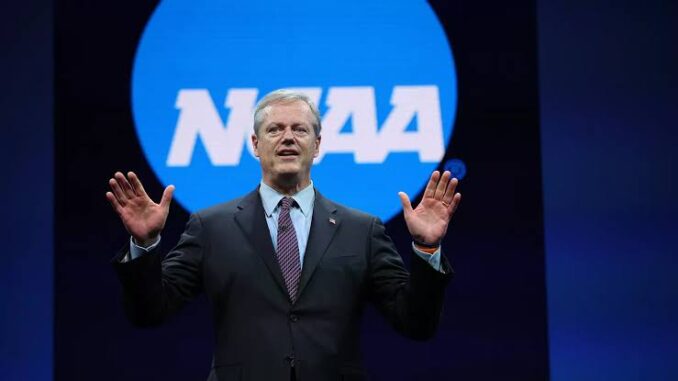
Lincoln, NE – The recent address delivered by NCAA Commissioner Charlie Baker has reverberated through the halls of every collegiate athletic department, but few felt the immediate impact and potential disruption as acutely as the Nebraska Cornhusker football program. Baker’s pronouncements, which appear to signal a radical shift in the landscape of college football, have left the proud Big Ten institution grappling with questions about financial viability, traditional roster management, and the very essence of its celebrated walk-on program.
Commissioner Baker’s speech, while not yet fully detailed in its official release, has been widely reported to lay out a comprehensive plan for collegiate athletics, driven by the pending House v. NCAA settlement. Key among the expected changes are:
* Direct Revenue Sharing with Student-Athletes: This is perhaps the most significant change, moving beyond the current Name, Image, and Likeness (NIL) framework to allow schools to directly compensate athletes. While a victory for student-athletes seeking a share of the massive revenues generated by college sports, it presents a substantial new financial obligation for universities.
* Roster Limits and Scholarship Overhaul: In a truly groundbreaking move, sources indicate Baker discussed replacing traditional scholarship caps with hard roster limits for all sports, including football. For FBS football, this limit is reportedly set at 105 players. This is a stark departure from the past, where teams could carry upwards of 120-140 players, with a significant portion being walk-ons.
* Enhanced NCAA Oversight of NIL: While the NCAA has largely taken a hands-off approach to NIL thus far, Baker’s address suggests a more centralized and regulatory role for the national office, potentially involving a new clearinghouse and stricter enforcement mechanisms.
* Efforts to Streamline and Standardize: Baker also emphasized the need for national preemption on state NIL laws and a more uniform approach to eligibility, seeking to reduce the current patchwork of rules and litigation that has plagued college sports.
For the Nebraska Cornhuskers, a program deeply rooted in tradition and community support, these changes strike at the core of their identity. The 105-player roster limit, in particular, poses an immediate and profound challenge. Nebraska has long prided itself on its robust walk-on program, which has served as a pipeline for talented, hard-working local athletes to earn scholarships and contribute significantly to the team’s success. Iconic figures like Grant Wistrom and Matt Davison, who began their careers as walk-ons, exemplify the program’s commitment to developing homegrown talent.
Under the new proposed rules, the ability to carry a large number of walk-ons would be severely curtailed, if not entirely eliminated. This not only impacts the dreams of aspiring student-athletes but also threatens a vital aspect of Nebraska’s team culture and fan connection. The concept of “homegrown heroes” would become much harder to cultivate if roster spots are so tightly constrained.
Financially, the direct revenue sharing with student-athletes will add another layer of complexity to Nebraska’s budget. While the Cornhuskers boast a passionate fanbase and strong financial backing, adapting to a system of direct payments, potentially reaching into the millions annually, will require careful planning and resource allocation. This comes at a time when many athletic departments, even well-resourced ones, are already navigating increased costs and the complexities of the current NIL market.
Coaches like Matt Rhule, who have emphasized building a strong, deep roster and fostering a competitive environment where players earn their spots, will need to fundamentally re-evaluate their strategies. The recruitment landscape will shift dramatically, with every roster spot becoming even more valuable and contested. The traditional role of the scout team, often populated by walk-ons, will also need to be reimagined.
While Commissioner Baker’s intentions are undoubtedly to create a more stable and equitable future for college athletics, the immediate fallout from these sweeping changes will be significant. For the Nebraska Cornhuskers, a program that has consistently navigated the evolving college football landscape with resilience and pride, this new era presents perhaps its greatest challenge yet. The coming months will be critical as athletic directors, coaches, and university leadership work to understand the full implications and chart a course forward in what promises to be a dramatically different college football world.
Leave a Reply